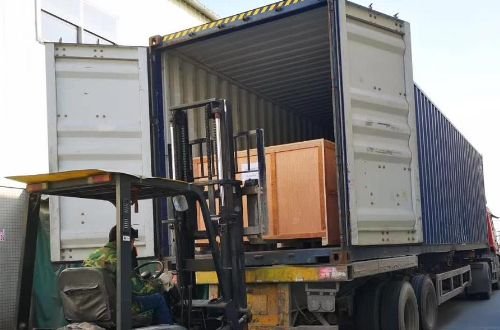VFFS machines play a crucial role in the packaging industry by automating the process of forming, filling, and sealing bags. Their efficiency and versatility make them a popular choice for various products.
In this comprehensive guide, we will explore the working principles of VFFS machines, their key components, applicable bag styles, sealing techniques, speed capabilities, and a comparison with HFFS machines.
What is a VFFS Machine?
A VFFS (Vertical Form-Fill-Seal) machine is a packaging equipment that forms, fills, and seals bags in a vertical orientation.
It is widely used in industries such as snack, powder, pet food, coffee, nuts, dry fuirt etc. VFFS machines offer high-speed operation, flexibility in bag styles, and precise control over the packaging process.
How Does a VFFS Packaging Machine Work?
VFFS machines follow a step-by-step process to create, fill and seal bags.
First, a roll of packaging film is unwound and fed into the machine. The film is then formed into a vertical tube using a forming tube. The bottom of the tube is sealed to create a bag.
Next, the product is dispensed into the bag through a filling system.
Finally, the bag is sealed and cut to the desired length, resulting in a fully packaged product.
What Are The Parts of a VFFS Machine:
VFFS machines consist of several essential components that work together to ensure efficient operation:
- Film Unwind System: This system unwinds the packaging film from a roll and feeds it into the machine.
- Forming Tube: The forming tube shapes the film into a vertical tube, creating the bag.
- Filling System: The filling system deposits the product into the bag, either by volumetric (cup filler ) or weigh filling (multihead weigher/ linear weigher) methods.
- Sealing System: The sealing system seals the bag using heat or ultrasonic method, ensuring product integrity.
- Cutting Mechanism: The cutting mechanism trims the bag to the desired length, ready for packaging.
Applicable Bag Styles on VFFS Machines:
VFFS machines can produce various bag styles to meet different product and packaging requirements:
- Pillow Bags: These are standard rectangular bags with a sealed top and bottom, suitable for a wide range of products.
- Gusset Bags: Gusset bags have expandable sides that provide increased volume, ideal for products that require extra space.
- Quad Seal Bags: Quad seal bags feature four sealed corners, offering enhanced stability for heavier or bulkier products.
- Stick Packs: Stick packs are slim, elongated bags suitable for single-serve products like sugar, coffee, or condiments.
Lap Seal vs. Fin Seal:
VFFS machines utilize two primary sealing techniques: lap seal and fin seal. Here’s a comparison of the two:
- Lap Seal: The Lap Seal, also referred to as an “Overlap Seam,” involves sealing the exterior of the film onto the interior of the film
- Fin Seal: Fin seal, also known as Fold-over Seam,the interior edges of the film are securely sealed together, and then a fold or fin is created by folding one edge over the other
How Fast Is The VFFS Machine?
VFFS machines are available for mid speed or high-speed options.
The speed of a VFFS machine depends on several factors, including bag size, product characteristics, machine configuration, and desired production rates.
While specific speeds can vary, VFFS machines can typically achieve max upto 200 bags per minute, making them suitable for large-scale packaging operations.
Differentiating HFFS and VFFS Machines:
Horizontal Form-Fill-Seal (HFFS) and Vertical Form-Fill-Seal (VFFS) machines are two common types of form-fill-seal machines used in the food packaging industry.
While there are some similarities between the two, they have distinct characteristics that set them apart. Let’s explore the key differences:
- Machine Structure: HFFS machine was made in a horizontal structure which occupy larger space, While VFFS machine was made in a vertical structure which may it much more compact.
- Bag Complexity: HFFS machines were initially used for simple packaging, such as sachets. However, they have evolved to handle more complex bag types with features like gussets, zippers, and spouts. On the other hand, VFFS machines have also evolved from producing primarily pillow bags to more complex systems capable of manufacturing quad seal bags, 3-side seal bags, and stand-up pouches with zippers.
- Bag Types: Although there are some crossovers in the bag types produced by HFFS and VFFS machines, certain bag styles are better suited for a specific machine type. For instance, VFFS machines are not suitable for forming corner spout bags, while HFFS machines cannot produce quad seal bags.
Conclusion:
VFFS machines are essential tools in the packaging industry, offering efficient and automated packaging solutions.
By understanding their working principles, components, bag styles, sealing techniques, speed capabilities, and the differences with HFFS machines, businesses can make informed decisions when it comes to selecting the right packaging equipment for their specific needs.
As technology continues to advance, VFFS machines will play an increasingly vital role in streamlining packaging processes and enhancing productivity in various industries.


